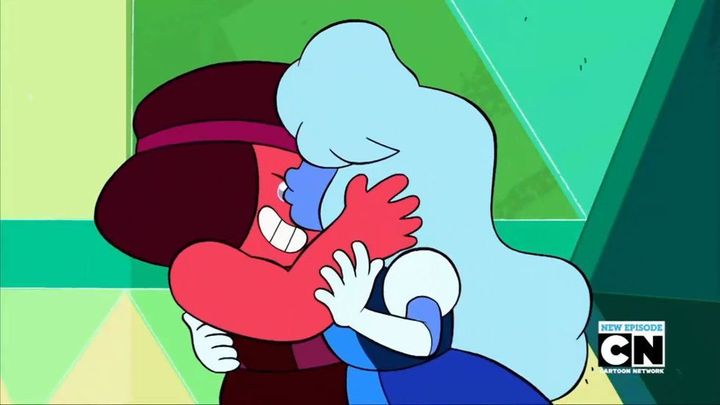There is a conversation that needs to be started about the word “gay,” and why you don’t need to cover the kiddies’ ears once you start it.
As a child, I grew up thinking that “gay” was a bad word. The older kids slung it around like an insult, and the adults would reprimand them for using it. When I was six, I was convinced that my Madeline book was suddenly inappropriate because it contained the word “gay” in it.
Mind you, I had no idea what the word gay meant. No one had bothered to explain it to me. By the way people used and reacted to it, you would think it was a crude word. A swear word. So imagine my surprise when I showed my book to my father and he reassured me that “gay” actually means “happy”.
This is a funny story, considering that today I identify myself as a lesbian. I, like so many others, grew up being conditioned to think that homosexuality — or any sexuality besides straight — was a Horrible Scandalous Thing.
There are many components as to how this became a problem. Most importantly, no one sat children down to explain what “gay” or “homosexuality” is. Consequently, kids concluded from their environment that homosexuality was perverse, and that the word itself can be used as an insult.
Do you or people you know have the impulse to suddenly lower your voices around kids when you start discussing homosexuality? Oftentimes, I’ve heard people claim that the topic of sexuality in general is exclusively for adults. If children heard these discussions, or were exposed to it in any fashion, they would become “affected,” as if homosexuality were a disease you caught by simply hearing about it or seeing it (which is obviously not the case considering LGBT folk still exist in this heternormative world).
The thing is, you don’t have to make the conversation sexual to start a discussion with your child about acceptance and love. Even children want a sense of belonging, and this is especially true for LGBT children. And yet growing up, there was virtually no gay representation for children of my generation to view and identify with. We were never exposed to it, and given no opportunity to be shown acceptance or that it was okay to not be heterosexual.
Luckily, these days, that appears to be changing. Popular cartoons like Steven Universe feature multiple examples of characters that experience same-sex attraction. Most of Pearl’s character arc is spent with her resolving her romantic feelings for Rose Quartz, Steven’s late mother. Ruby and Sapphire are in a relationship that is shown to be realistic, loving, and healthy. Their fusion, Garnet, provides excellent scenes of learning that loving others and loving yourself makes you stronger.

Ruby (left) and Sapphire (right) from the hit cartoon Steven Universe by Rebecca Sugar
Even more recently, Beth David and Esteban Bravo (who both identify as homosexual) from the Ringling College of Art + Design have created the animated short “In a Heartbeat,” which has become a great hit among audiences. The short depicts the story of a Catholic middle school boy with a crush on his male classmate, and what happens when his own heart leaps from his chest and outs his affection.
This exposure and representation for children is so, so important. It gives LGBT children the chance to see that their feelings are no less valid than their straight companions, to see that they too are deserving of acceptance and love.
This is crucial because an expression of affection, even an innocent crush, is not a solely adult thing to experience, and neither is love a strictly sexual thing. Society loves to hypersexualize any display of homosexuality, claiming that LGBT people are rubbing in their faces. And yet a vast majority of media is heterosexual. We assign heterosexual roles all the time, but we never protect children from that.
Children need to know from an early age that same-sex love is okay, and does not deserve to be treated as a taboo or an inappropriate thing.
And this is for the benefit of all children, not only LGBT ones. Teaching children that it’s okay to have an alternative sexuality does not mean you’re teaching them to become that. Instead, you’re giving them room to grow into more accepting people, and people that love themselves for who they are.
And isn’t love and acceptance what we strive to teach our children? A hurtful world is constructed when we place our religious beliefs and bigotry before the safety and acceptance of others, especially our children.
Normalizing and not hypersexualizing same-sex relationships is the key to bringing equality to the younger generations. For some, it will even bring a sense of comfort and belonging, thereby eliminating long, alienating years adolescents go through when they begin to have awareness of their sexuality.
Talk to your children. Educate them that even if love comes in different forms, it is still love. A love that is healthy, seeks to only understand itself, gain acceptance and grow, is one that should be nurtured and is nothing to be ashamed of.
